Secure, functional, and beautiful, surely there is a lot to love about the innovation of the casement windows. From the large wooden windows in ancient homes to the present modern architecture, the style of casement windows did not stand the test of time in beauty alone. While choosing the perfect windows for your home, you consider a diverse range of factors, and different windows have their different capabilities, it is the perfection of casement windows that makes them excel at every aspect of customer satisfaction.
If you wish to have a kind of window that is easy to open or close and offers an elegant appearance along with smooth functionality, casement windows are the perfect choice for you. These are the kind of windows that are attached to their frames with hinges that allow the windows to swing open or close like a traditional door. These windows can offer a wide view of the outside nature and proper ventilation when the windows are opened. Let’s dive deeper into the different types, advantages, and disadvantages of the structures with detailed analysis.
Types Of Casement Windows
Casement windows are one of the most popular and common types of windows among homeowners and builders due to the contemporary feel of the windows, along with ease of operation and beautiful aesthetics. One of the unique features of the casement windows is that they come in a variety of design and functionality options to cater to the specific needs of the customers, some of which are as follows:
1. Single Frame Casement Windows
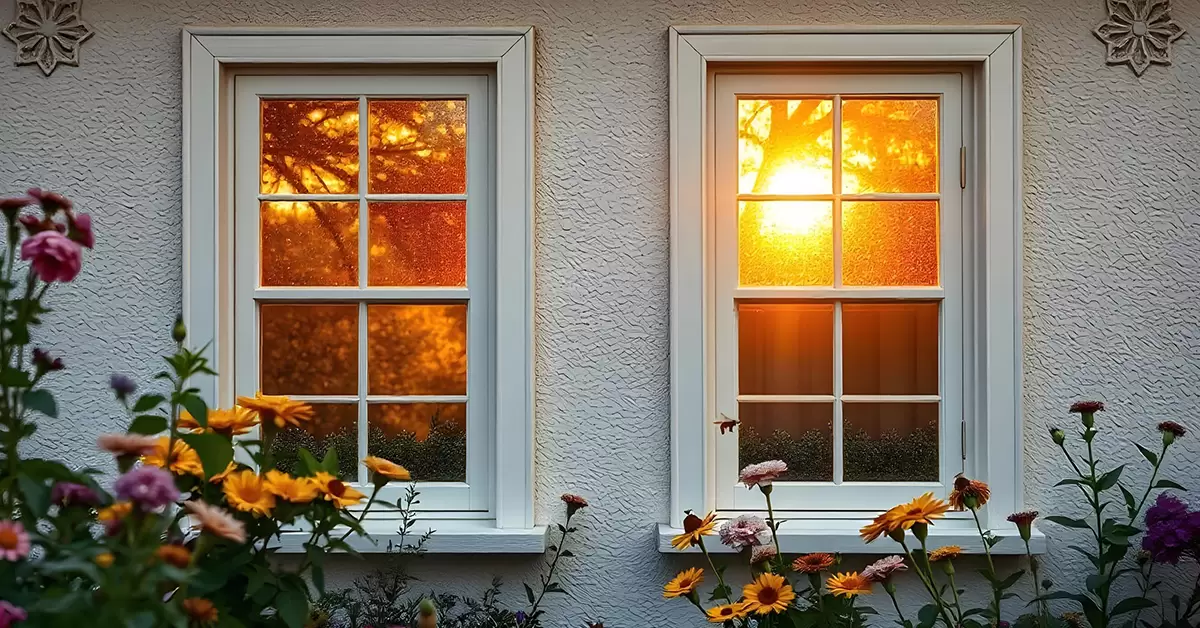
This is one of the most basic types of casement windows that features a single frame with a single sash that is hinged on one side. This kind of window typically opens outwards and offers incredible suitability for smaller rooms or for spaces where the outside view is obstructed.
2. Double Frame Casement Windows
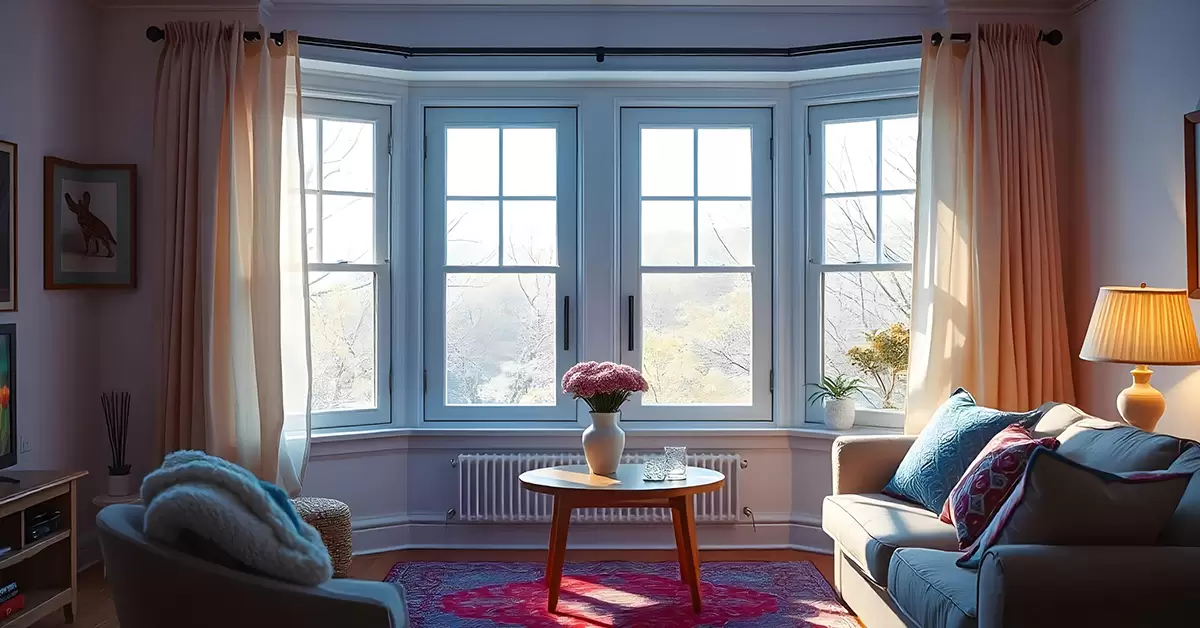
These are the kinds of windows that typically comprise two sashes that are usually hinged on either side of the window frame. These windows typically open outwards and offer an excellent option for larger spaces where proper ventilation along with a wide view is needed.
3. Triple Frame Casement Windows
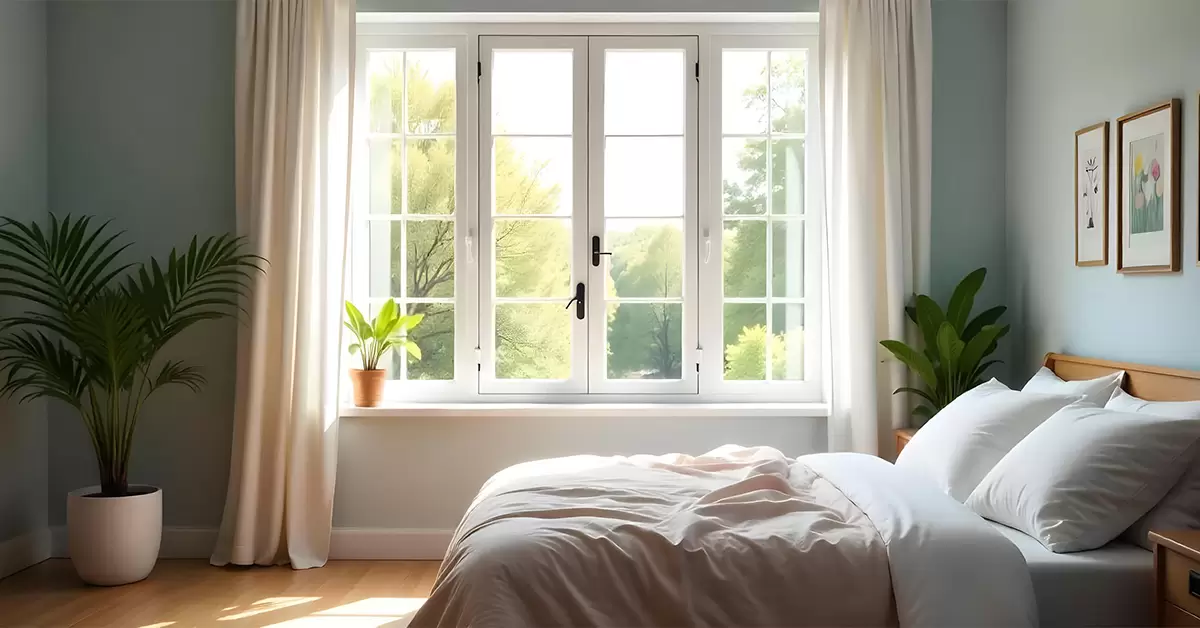
This is a unique design of casement windows that comprises three sashes installed side-by-side to each other within a single frame. They are often ideal for larger rooms or spaces with the remarkable standards of ventilation and the panoramic views they provide. You can customize your triple-frame casement windows with operable or fixed panels depending on your likes, preferences, and needs.
4. French Casement Windows
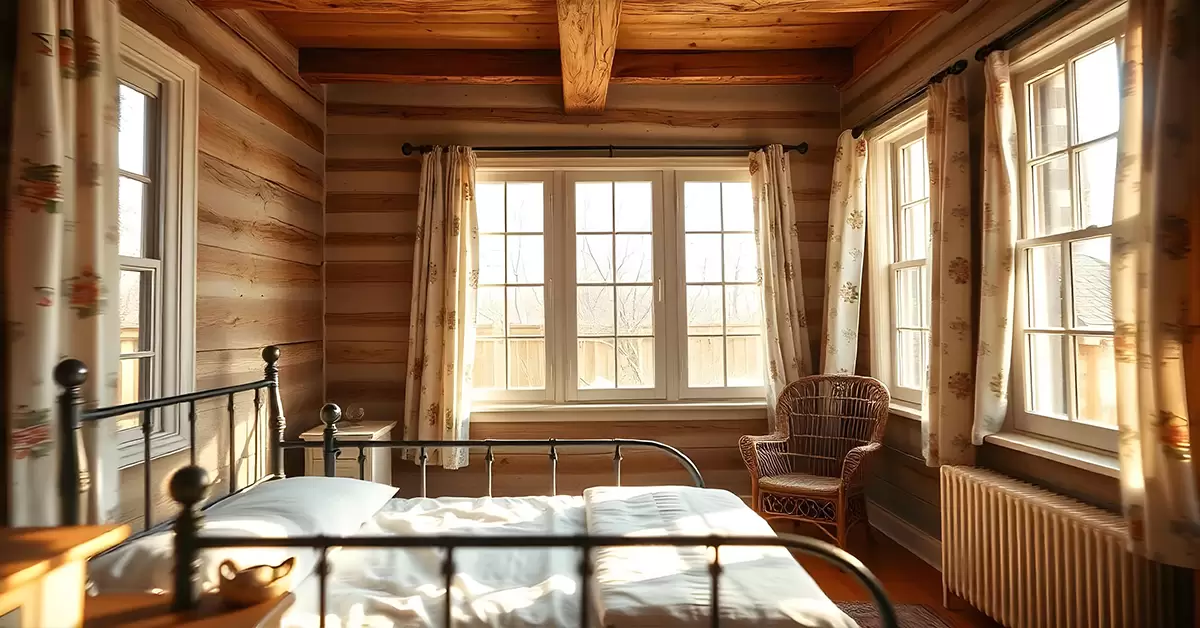
This is the premium option for traditional windows that is known for its aesthetics and the touch of luxury it adds to the interiors. The French casement windows typically comprise two sashes without any central post that are typically hinged on either side of the frame. These kinds of windows offer an unobstructed view with incredible ventilation and ambience to the interiors.
5. Awning Casement Windows
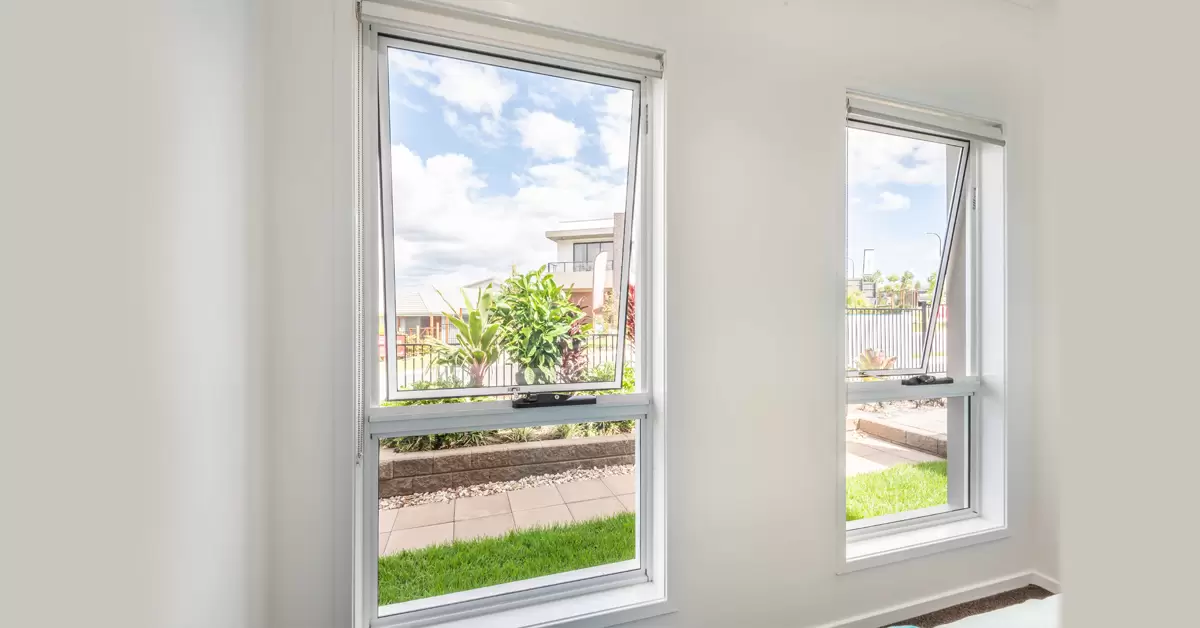
This is a unique design of casement windows where the sashes are hinged from the top and open outwards from the bottom of the frame. These windows are typically used where privacy is a concern for the occupants or when the windows need to be installed at higher altitudes on the walls. These windows offer excellent ventilation even in harsh weather conditions and offer good privacy standards while not giving outsiders a clear view of the interiors.
6. Bay And Bow Casement Windows

The bay and bow design of windows refers to a design where the windows are installed slightly outside of the main wall adding to the overall space of the room. This design usually consists of multiple casement windows that are installed in a curved or angular position to create a wide, beautiful view with spacious interiors and proper ventilation.
Types Of Casement Windows Based On Material
Along with different options for functionalities, the casement windows also come in a wide variety of materials to cater to the unique needs of the customers. Every material has its unique features and suitability for the different climatic profiles of the country, and to make an informed decision, you need to have a brief understanding of each. Some of the common types of materials used for the manufacturing of casement windows are as follows:
1. uPVC Casement Windows
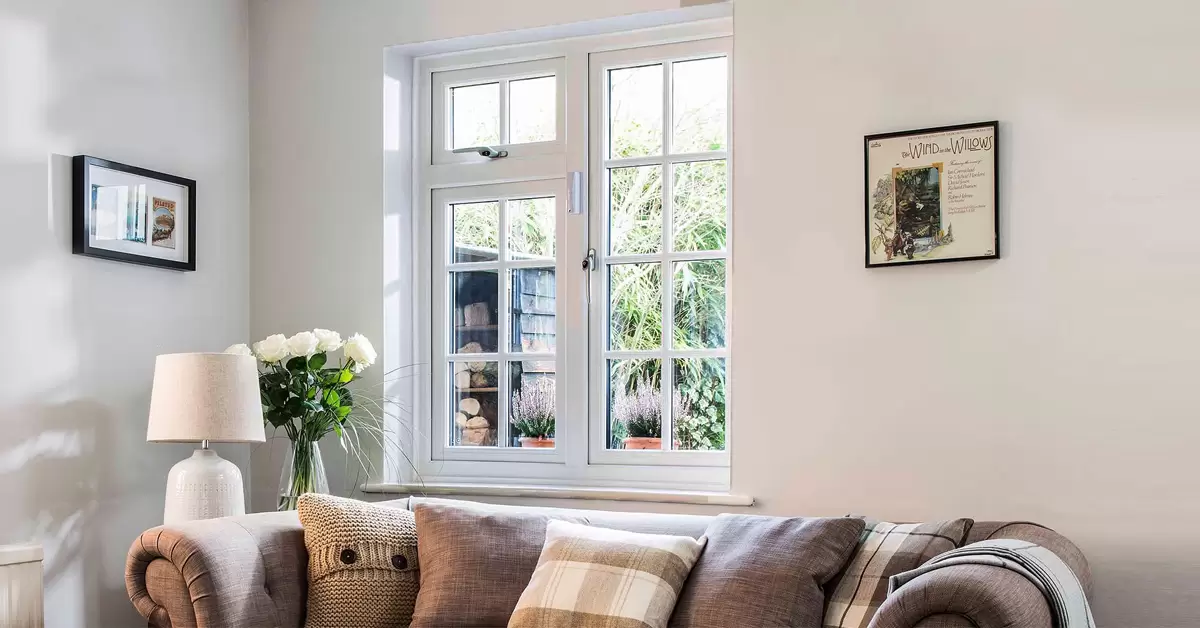
uPVC is a kind of versatile polymer that proves to be a popular material for the manufacturing of windows and doors due to the energy efficiency, insulation, durability, and affordability it offers to the owners. The uPVC casement windows can withstand even harsh climatic conditions with their resistance to corrosion, rust, weathering, and fading along with low maintenance needs.
2. Aluminum Casement Windows
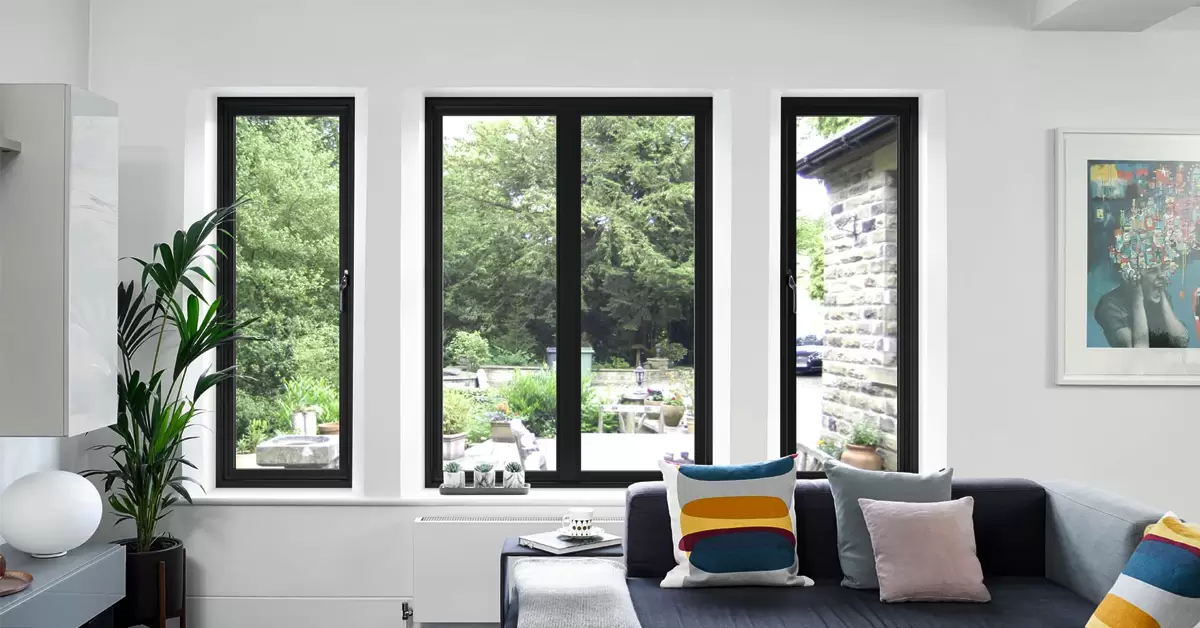
Aluminum is a kind of lightweight material that offers good levels of strength and flexibility, making it an ideal option for the manufacturing of windows. The aluminium casement windows offer remarkable durability and longevity with effective resistance to corrosion or rusting and with low upkeep needs. There are a plethora of customization options in terms of aluminium casement windows with the modern and sleek look of the material.
3. Wooden Casement Windows
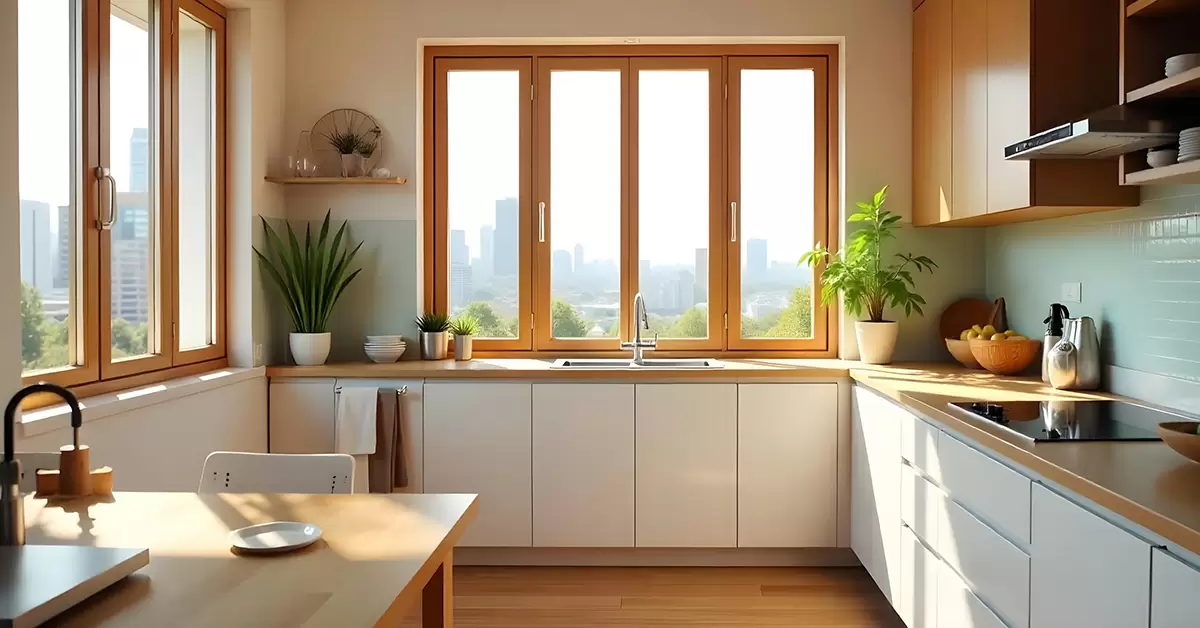
The classic appeal of the traditional aesthetic of timber is hard to mimic with other materials, and this one feature is enough to make it a preferred choice for consumers. The wooden windows are significantly high maintenance as compared to aluminium windows or uPVC ones, but the variety of design, style, and finish options the structures offer is incredible.
4. Steel Casement Windows
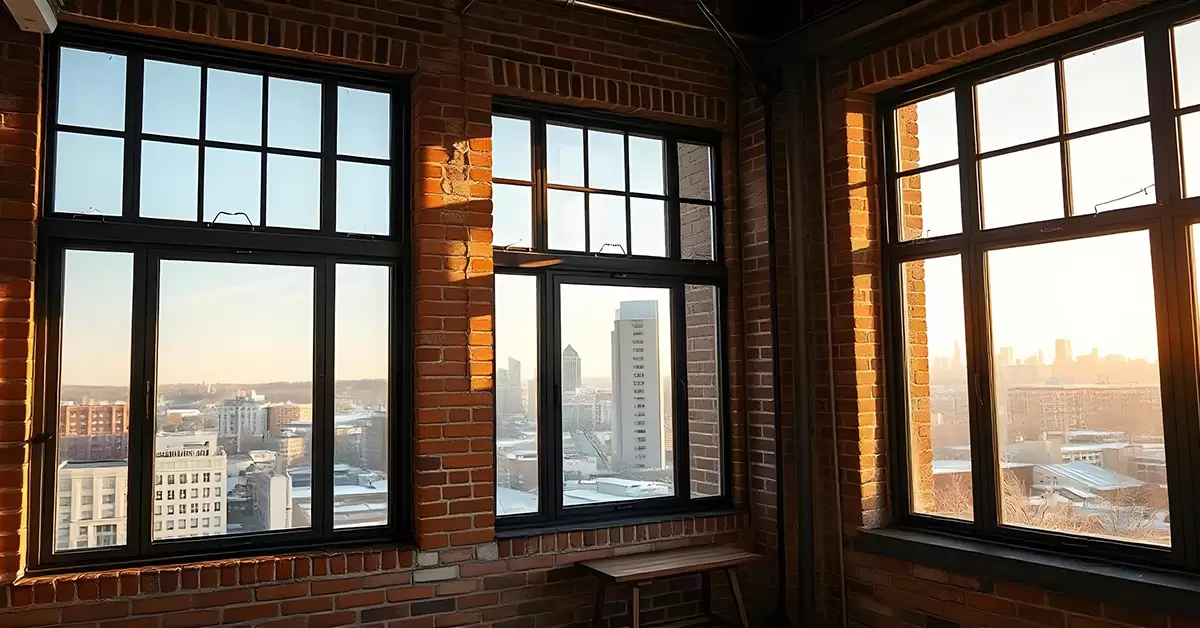
They are typically used for industrial applications of casement windows with the standards of security, durability, and longevity that the structures offer to the occupants. Steel is a highly reliable material that offers unmatched safety standards, but can be prone to rusting in the long run if not maintained properly.
5. Composite Casement Windows
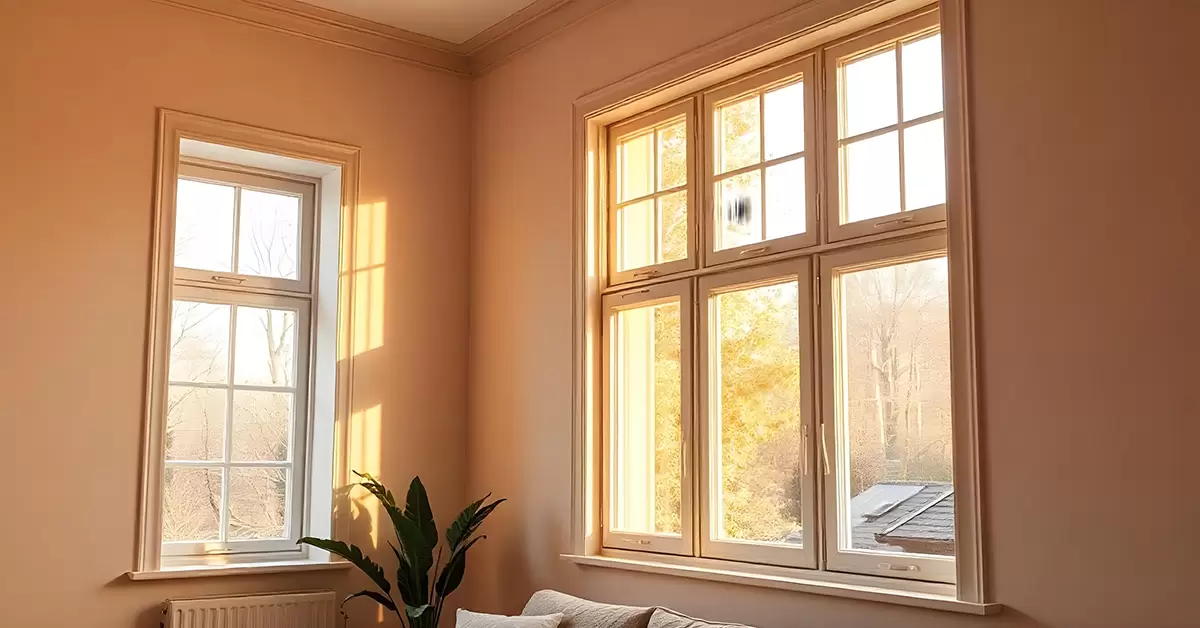
One of the most popular options of material for casement windows with high standards of efficiency and durability is composite windows. The composite casement windows are typically made of a meticulous combination of two or more materials offering the unique benefits of each while eliminating their shortcomings. They often prove to be excellent choices with unmatched insulation, durability, energy efficiency, and effective performance in the long term.
Pros Of The Casement Windows
Every product has its own set of advantages and disadvantages that make it unique and suitable for a specific set of people, and so are casement windows. The casement windows prove to be an incredible combination of form and function, and their premium features make them a loved choice. Some of the popular advantages of the casement windows are as follows:
- Proper Ventilation: One of the most prominent features of the casement windows is the standard of ventilation or airflow the design offers. The swing-open mechanism of the casement windows promotes proper airflow with a substantial breeze entering your home with an abundance of natural light and positive energies. This helps to promote a healthy indoor environment and allows for controlled ventilation by opening or closing the window.
- Energy Efficiency: The casement windows especially the aluminium casement windows or the uPVC casement windows promote a tight seal that prevents air leakage from the windows. This design prevents warm air from escaping from indoors during the winter and also promotes a comfortable temperature indoors during summer. In the tropical climates of India, it is one of the most critical components to look for while purchasing windows.
- Extra security: Casement windows prove to be one of the most reliable options for homes to maximize the standards of security and privacy of the occupants. The airtight seal of the windows and the hook-shaped locks in the frames make it hard for intruders to break in making the windows a more secure option for people.
- Unobstructed View: The modern casement windows feature large glass panels that stretch from the top to the bottom of the frames. This allows the occupants to have a wide, unobstructed view of the outside with no disruption in between.
- Redefining Convenience: One of the best benefits of casement windows that make it a popular choice among people is the ease of operation and convenience it offers. With an innovative hinge system and unique crank mechanism, the windows offer exceptional versatility in operations.
- Easy Maintenance: The casement windows, especially the uPVC casement windows or the aluminium casement windows, offer incredible performance with minimal maintenance requirements. The cleaning process is very easy for such structures, and the reduced repair or replacement makes it a good choice for modern people.
- World of Customizations: There is no single price for casement window,s but many due to the plethora of design, style, and customization options the structures provide, but a key element is that every casement window is a smart investment with remarkable features and exceptional grace.
What Are The Disadvantages Of Casement Windows?
Despite the diverse range of remarkable benefits of the windows, there are certain disadvantages of the structures as well. The homeowners or the builders need to understand the potential drawbacks of the casement windows to compare the pros and cons and make an informed decision. Some of the common cons of casement windows are as follows:
- Space Requirements: The casement windows are typically designed to swing open outwards or inwards which requires extra clearance space for the operation of the windows. This makes it completely less efficient in smaller or compact spaces. In compact spaces, designs like sliding windows can prove to be more effective while eliminating the need for clearance space.
- Casement Window Price: With an advanced hinge system and unique customization options, the casement window prices can be quite unaffordable for a part of the population. However, with the premium features and the aesthetic appeal of the windows, the costs you pay prove to be a worthy investment in the long run.
- Mechanism Limitations: Due to the opening and closing mechanisms of the windows along with their role in supporting the integrity of the windows, the casement windows are usually not suitable for openings larger than 170 cm. The panels in the casement windows need to be lightweight to ensure smoothness of the movement.
- Vulnerable To Damage: The casement windows are typically designed to open outwards with a swinging mechanism, this makes the windows susceptible to rain, strong winds, and other weather-related concerns. This can damage the windows, even breaking them and allowing water or storms inside the home.
What Is The Cost Of Casement Windows?
Casement Windows Price based on Functionality
|
Types of Casement Windows |
Casement Windows Price |
|
Single Frame Casement Windows |
₹250 to ₹710 per square foot |
|
Double Frame Casement Windows |
₹260 to ₹660 per square foot |
|
Triple Frame Casement Windows |
₹280 to ₹850 per square foot |
|
French Casement Windows |
₹350 to ₹1500 per square foot |
|
Awning Casement Windows |
₹537 – ₹1,497 per square foot |
|
Bay And Bow Casement Windows |
₹400 to ₹2560 per square foot |
Casement Windows Price Based on Material
|
Types of Casement Windows |
Casement Windows Price |
|
uPVC Casement Windows |
₹250 to ₹710 per square foot |
|
Aluminum Casement Windows |
₹180 to ₹1,200 per square foot |
|
Wooden Casement Windows |
₹500 – ₹2,500+ per square foot |
|
Steel Casement Windows |
₹400 – ₹1,500 per square foot |
|
Composite Casement Windows |
₹600 – ₹2,000 per square foot |
Factors That Affect Casement Windows Price
One of the most considerable factors that influence our decision about a diverse range of structures is their price. Casement windows are quite affordable, but you still need to understand the numerous factors that impact the cost of the structures to ensure the best value for your investment.
- Frame Material: There are numerous material options available in the industry for the casement windows. You can go for uPVC casement windows for a low cost and low maintenance choice, the aluminium casement windows for durability and a modern look, wooden windows for a classic and rich look but with a premium price, and the composite material options for fascinating features and enhanced durability. Wood and composite are more expensive choices.
- Glass Type & Glazing Options: The glass and glazing are essential to ensure the safety of the windows, along with imparting thermal and sound insulation properties to the structures. You can go for single glazing for an affordable price, but it comes with weaker energy efficiency. Double or triple glazing is are advanced options that ensure energy efficiency and noise insulation but come at a higher price. There are numerous other categories as well, such as tempered, laminated, or Low-E glass, which are equipped with additional features but come with an increased price structure.
- Size of the Window: One of the most obvious and significant factors is the size of the windows. The larger the windows, the more material will be used, which will subsequently lead to increased costs. The standard sizes are often affordable due to mass production, while the custom sizes come at a higher price. Moreover, the complex or intricate designs require more labor and thus a higher cost. You can also opt for additional features such as built-in blinds, decorative grilles, or frosted glass that can elevate efficacy but also add to the cost.
- Hardware & Accessories: The windows also comprise several hardware accessories, such as the handles, hinges, locks, and movement mechanisms. You need to opt for high-quality options such as high-security locks, quality hardware, and stainless steel mechanisms for the long-term practicality of the structures. The premium options come with a higher price tag, and thus, you need to go for options that ensure a balance of cost and performance.
- Installation & Labor Costs: To ensure the long-term performance and success of the casement windows, you need to ensure proper installation and maintenance. You should go for professional fabricators who can ensure proper fitting and sealing. The installation and maintenance also a considerable amount of the final casement windows price in India. To add to the facts, the cost of retrofitting existing frames is often cheaper compared to the cost involved in the creation of new openings.
- Brand & Warranty: The reputation of the casement window manufacturers is also an influential part of the overall cost of the structures. The leading manufacturers or suppliers in the industry ensure better quality along with dedicated customer service and a number of warranties but also offer the products at a higher price while the local suppliers often offer affordable price structures.
- Additional Features: You can also include diverse premium features in your windows, such as smart locks, low-e coatings, thermal break technology, and others that can contribute to the effectiveness of the structures but also add to the cost. The market demand and supply dynamics of the windows can also influence the price structure.
What Are The Applications of Casement Windows?
Casement windows are one of the most widely used window styles because they offer the best ventilation, energy efficiency, and ease of use. Side-hinged and opening outward like a door, they give an uninterrupted view and maximum airflow. Being versatile, they can be applied to a variety of applications in residential, commercial, and specialty buildings.
1. Residential Homes
Casement windows are predominantly utilized in houses due to their provision of beautiful and functional options for natural illumination, ventilation, and energy saving.
- Bedrooms: Permit fresh air movement and airtight closure to keep out sound and outside intrusion.
- Living Rooms: Ensure ease of cleaning and maintenance, unobstructed outdoor views, and increase the beauty of the room.
- Kitchens: Perfect for use above sinks or countertops where minimal effort is needed.
- Bathrooms: Frequently fitted with frosted or tinted glass to provide privacy while still enabling ventilation to avoid moisture accumulation.
- Attics & Basements: Utilized in areas with limited wall space to optimize airflow and light.
2. High-Rise Apartments & Buildings
Casement windows are a great option for high-rise buildings because they are safe and can ensure air flow from various directions.
- Apartments: Safe locking systems avoid accidental opening while still permitting ventilation.
- Penthouses: Huge casement windows offer maximum scenic views with the added benefit of insulation from weather conditions.
- Balcony & Stairwells: Employed where natural light and ventilation are critical.
3. Commercial Buildings
Casement windows are predominantly fitted in commercial environments where energy efficiency, durability, and functionality are paramount.
- Office Buildings: Supply fresh air circulation while minimizing the use of artificial cooling.
- Hospitals & Clinics: Permit controlled ventilation, supporting a healthier indoor atmosphere.
- Schools & Universities: Provide natural light and air flow, encouraging a pleasant study environment.
- Retail Stores & Shopping Centers: Enhance beauty and design by welcoming storefronts with huge casement windows.
4. Energy-Efficient & Sustainable Buildings
Casement windows are greatly appreciated in green architecture as they can enhance insulation and energy efficiency.
- Green Buildings: Employed in LEED-rated and passive house construction for their tight seal and high thermal performance.
- Solar-Powered Homes: Frequently coupled with double or triple glazing to reduce heat loss.
- Ventilation Strategies: Strategically fitted to take advantage of prevailing winds and enable cross-ventilation.
5. Bathrooms & Kitchens
Casement windows are a preferred option in zones that are likely to experience moisture buildup because of their ease of operation and proper ventilation.
- Over sinks and countertops: Permits fresh air to pass through while being easily operable.
- Near showers and bathtubs: Helps to eliminate humidity, preventing mold and mildew growth.
- Pantry & Storage Areas: Keep air circulation consistent to avoid stale air buildup.
Choose The Right Kind Of Casement Windows With Us
The architectural and design industry is overflowing with products when you plan to buy windows or doors for your home or any other space. The world of diverse options allows people to research, choose, and make an informed decision to find the right windows and then the right fabricators for installation.
Casement windows have been a popular choice in ancient times and are still a preferred choice, that’s because of their mechanism and ease of use. We often suggest that people find and consult the most reliable casement window manufacturers and then choose windows that suit their needs best.
Read Also: 7 Types of Casement Windows For Modern Homes
FAQ’S
Q:1 Which is better, casement or sliding windows?
A:1 Among the casement and sliding windows, what would be the best choice for you depends on your specific needs and requirements. The casement windows are better choices if you want proper ventilation and energy efficiency in your spaces, and sliding windows can be effective with their space-saving approach and easy operation.
Q:2 What is the average lifespan of a casement window?
A:2 The lifespan of the casement windows depends heavily on the type of material used in manufacturing and the maintenance offered. However, you can enjoy a lifespan of around 35 to 45 years with proper care.
Q:3 What is the best material for casement windows?
A:3 The best material for a casement window depends on your specific preferences in terms of durability, aesthetics and insulation properties. However, the glass, uPVC, and aluminium casement windows prove to be the most reliable choices with their premium features and stylish looks.
Q:4 How safe are casement windows?
A:4 One of the key features of the casement windows is that they have a design where the window sits tight to the frame when the window is closed, which ensures a reduced risk of break-in or outside interferences when the window is closed. Additional security features can also be added, but the casement windows are built to be remarkably secure.
Q:5 How do I clean casement windows?
A:5 You should first remove the dirt or loose debris from the window frames and sills using a soft cloth or brush. Then, you can simply clean the frame and the glass with a soft cloth and a mild detergent. You should avoid using abrasive or harsh chemicals on the surface, and can easily dry up the surfaces with a lint-free cloth.



